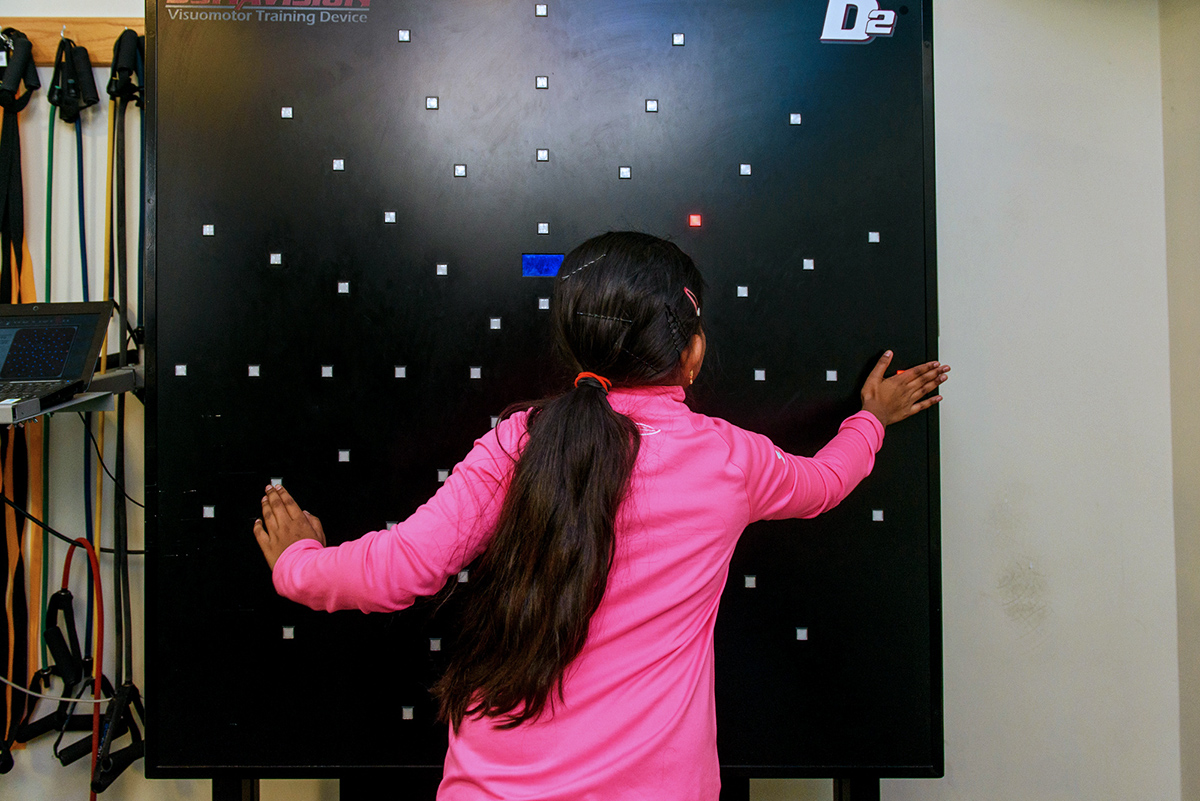How Athletes Are Training Their Brains
Like a digital Whac-a-Mole, Dynavision's neuro-cognitive sports training device is quickening reaction times.

An innocuous board, four feet square, is the next-generation tool helping Mizzou athletes react — react quicker, react smarter and potentially prevent injuries such as concussions. Brett Hayes, Director of Therapy Services at the MU Human Performance Institute, uses the Dynavision D2 to train athletes’ eyesight and improve their peripheral vision.
“That really is the key to true athleticism,” Hayes says. Peripheral vision “captures your attention for things soon to come into view.”
The normal range of vision is 190 degrees, but the peripheral vision adds that little bit beyond and behind your sight. For an athlete, anticipation in these marginal areas can mean the difference between a spectacular catch and a ball falling harmlessly to the ground. Or, more so, the difference in a win and a loss.
The D2 board has a black background with a starburst of 64 small, lighted targets. The center screen flashes numbers or letters to ensure an athlete doesn’t cheat. According to Hayes, the athletes must yell whatever number they see and hit the corresponding light. “That forces them to focus their central vision and use their peripheral to react.”

Hayes might tell an athlete to hit lights on the right side with their left hand. That confusion challenges the hand-eye coordination and builds proficiency in what is called choice-reaction time — the moment between when a person catches that glimpse of movement and the time he or she begins reaching a hand toward the light.
“We’ll make a game out of it: who’s getting a better score? You can time it as you would a 40-yard dash,” he says.
But this digital Whac-A-Mole also trains athletes to become more aware of their surroundings. On the field, that might mean anticipating other moving bodies that could cause an injury.
“We’re finding this helpful for concussion management,” Hayes says. “So many companies are working toward making better helmets, better equipment, things we’ve been doing over the years, yet concussions haven’t really improved that much. We think when an athlete can see their peripheral vision quicker and react to it quicker, they can avoid a lot of the collisions.”
An initial research study of the football team at the University of Cincinnati indicated a significant link between visual training and a reduced number of concussions. In other words, the future of sports safety might just be right in front of our eyes.
Photos Courtesy of MU Health Care
